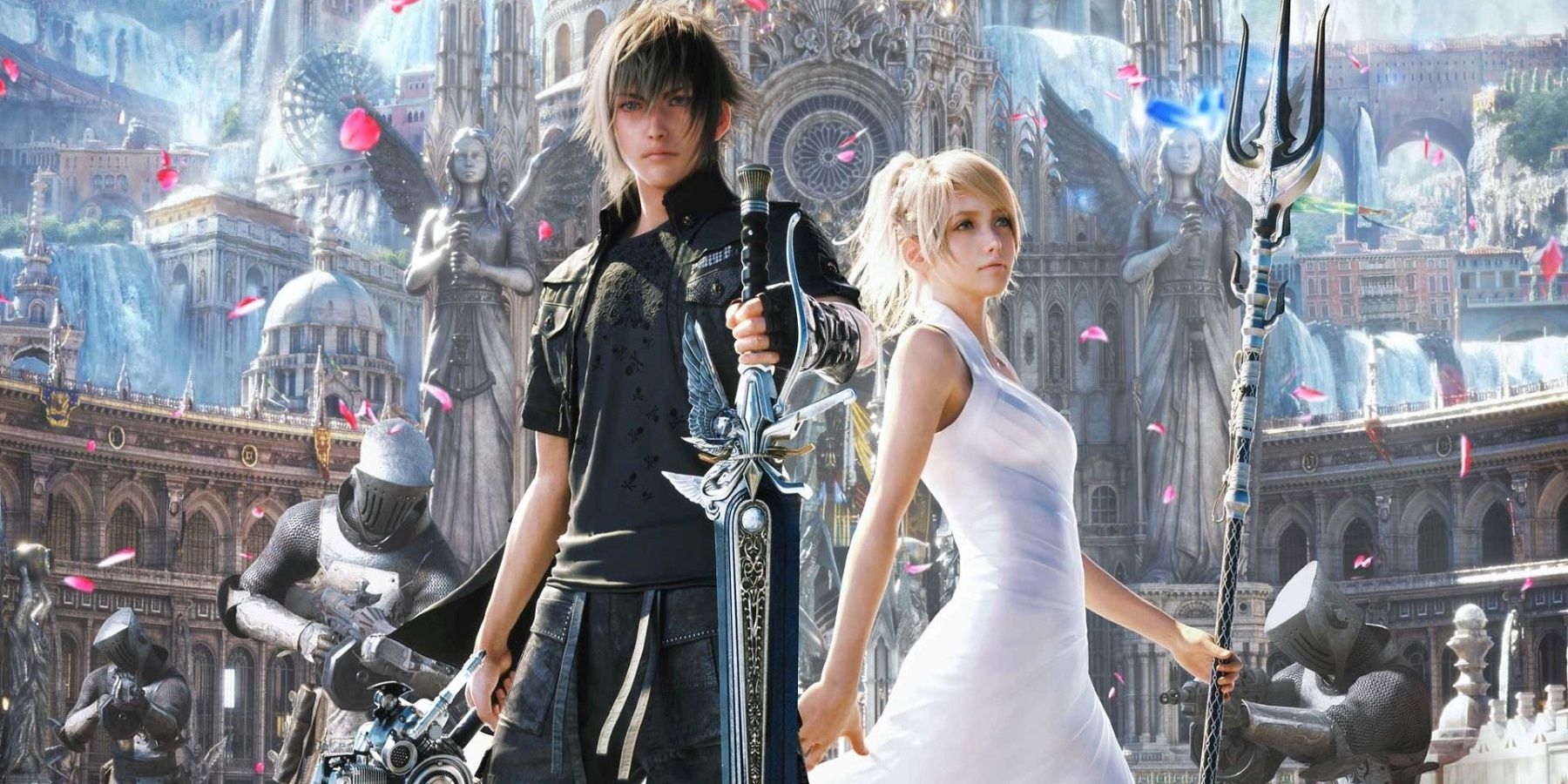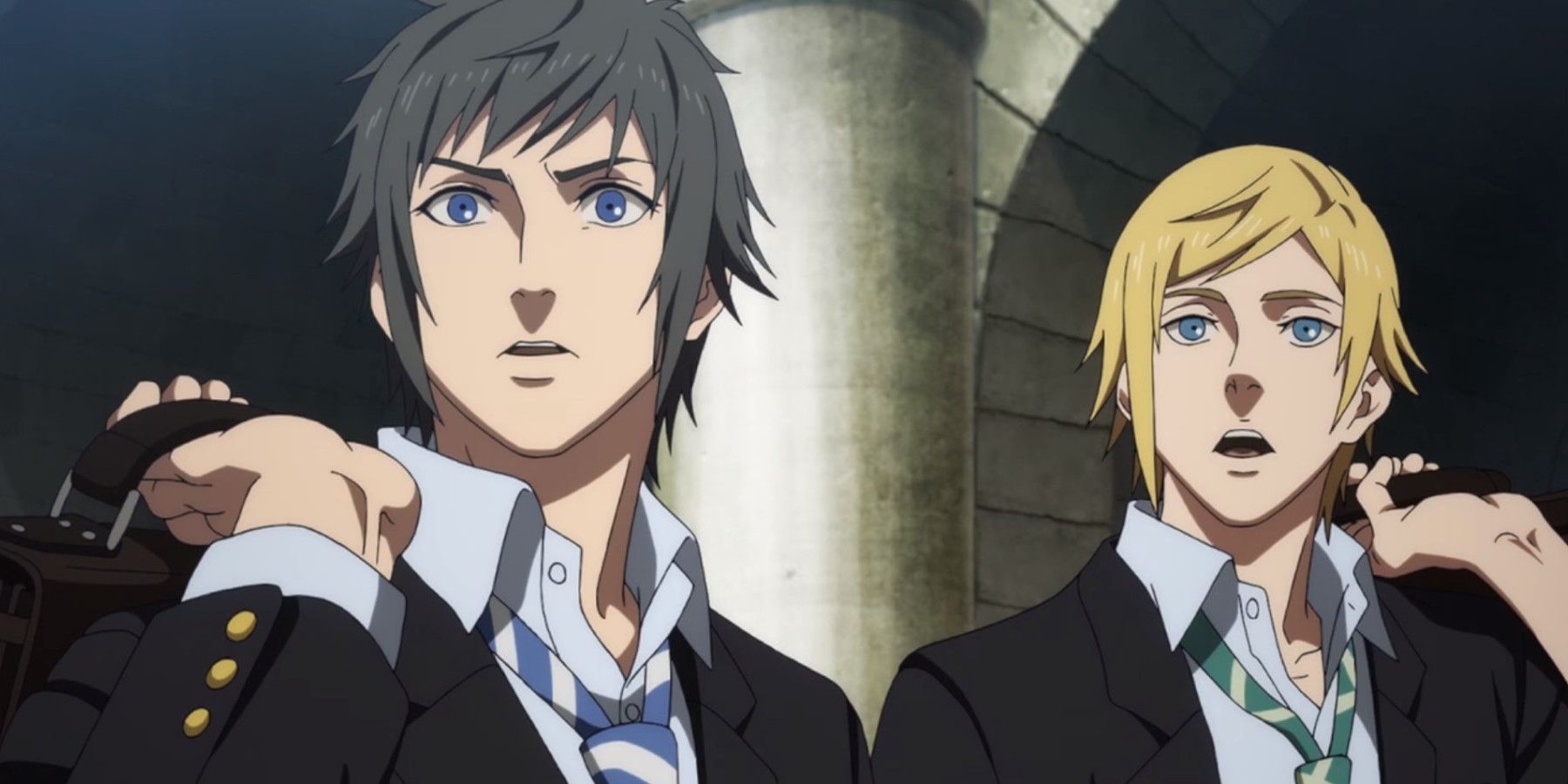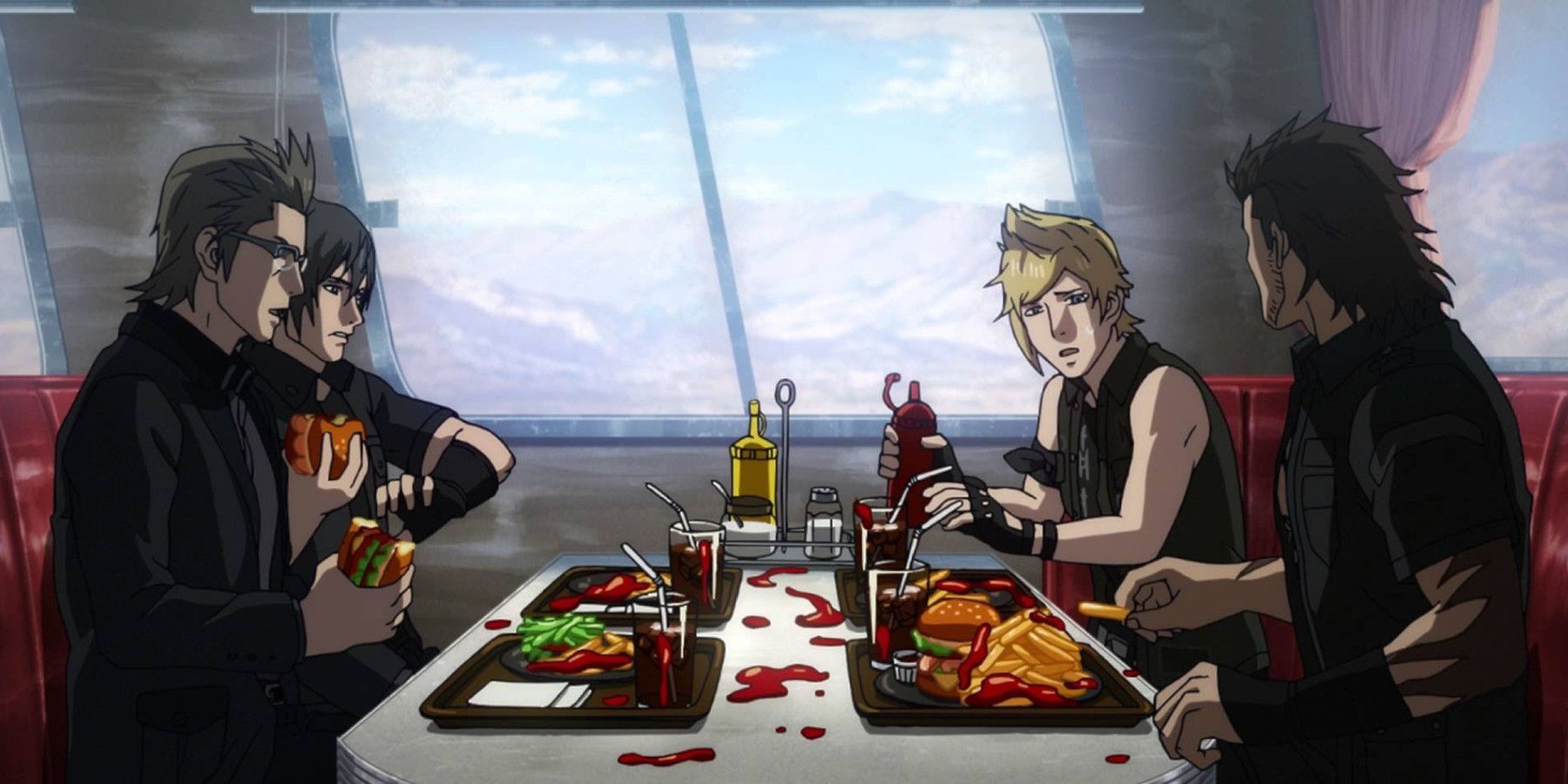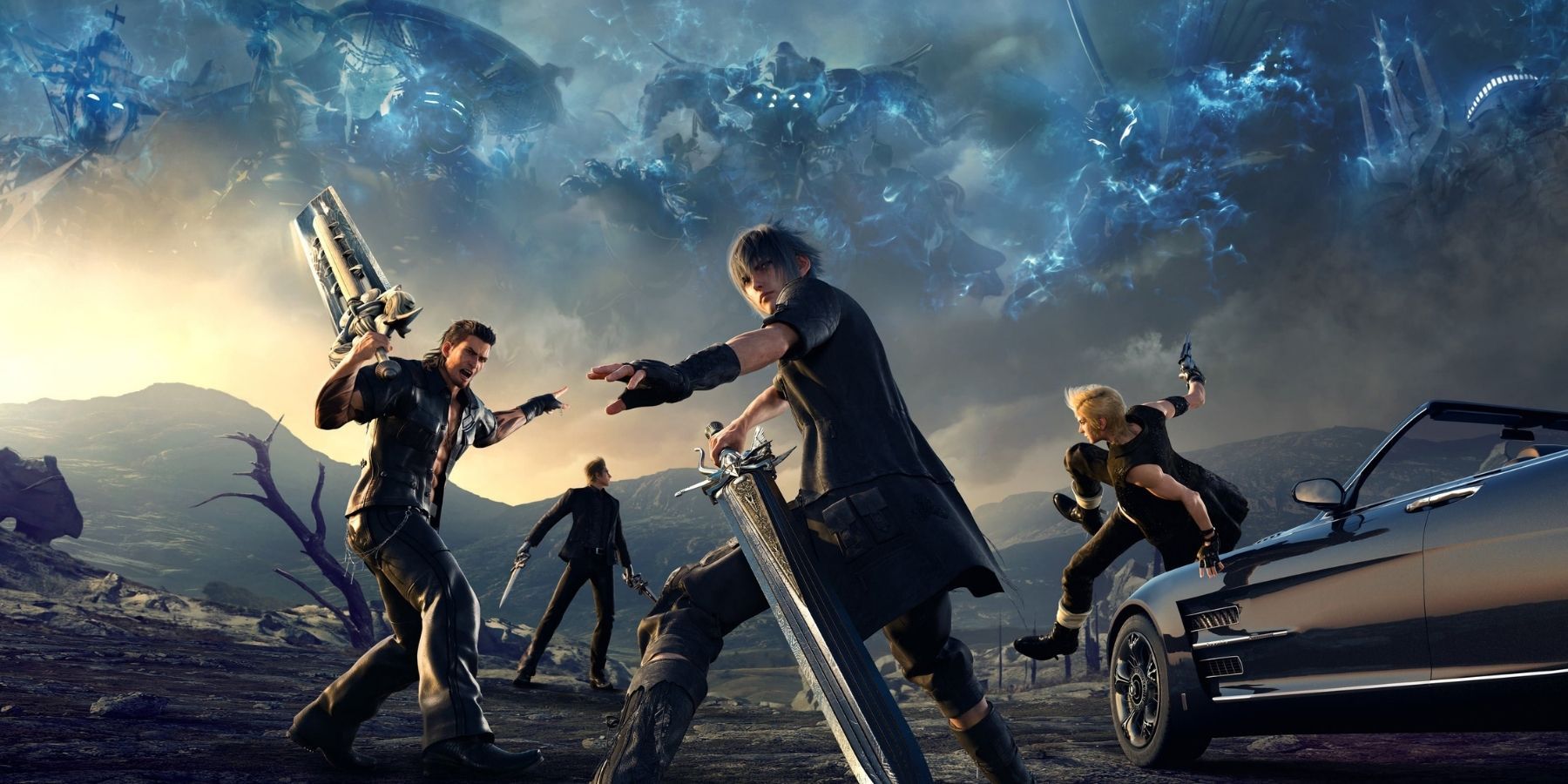Final Fantasy is a unique beast because there's no one defining story yet individual ones that achieve colossal popularity become their own micro-franchises as expansive as any other. Final Fantasy 7 got spin-off games, a movie, and a remake that's technically a sequel, but that all came after it was a certified hit, whereas Final Fantasy XV seemed to skip a few steps.
Final Fantasy XV was released in 2016 to a mostly positive reception after a decade of development hell, the directors shifting, and the narrative changing with them. In the process, this story became so jumbled that the complete work was split not just across the game itself, but its adjacent tie-in properties, one of which was Brotherhood.
(Partially) Required Reading
Brotherhood is a five-episode anime series from A1 Pictures, directed by Souichi Masui, who directed Bunnygirl Senpai as well as Fall 2022's Akiba Maid War. The miniseries begins with the main quartet in the middle of their cross-country road trip when they encounter Magitek troopers and a familiar monster from Noct's past. From there, episodes 2-5 are flashback episodes, each one focusing on one of the main four: Prompto, Gladio, and Ignis, respectfully. Then, episode 6 concludes where the series began, with a big fight. The episodes themselves are short, all less than 20 minutes in length, but give great insight into the characters' origins and how they became loyal confidants of Noctis, the protagonist.
Save for the first and last episodes, it's not an incredibly action-packed series, favoring smaller, more personal stories that have a way of tying into the game. For instance, the recipe that Ignis attempts to replicate in his episode of Brotherhood pays off in the game when the party discovers the ingredient that was missing all those years. Prompto's episode is by far the most memorable story of the series, as it paints the most contrasting portrait of its central character, compared to how he's presented. Prompto is revealed to have had weight issues as a child, and he strives to lose weight. On its own, the portrayal of self-betterment is very inspirational, although the story has this weird way of suggesting that Noctis wouldn't have been friends with Prompto unless he was skinny which seems unnecessary.
Fans might have expected something like an action-heavy anime hype reel in anticipation of the game, but what they got was character prologues with rather low stakes. The first and last episodes have the most action by far, with the added payoff of Noct's allies helping him vanquish the monster that once almost killed him, granting Noct some closure about the loss of his father.
A Dull Fantasy
There isn't much to say about the production values as the series doesn't feel like it was meant to be anything huge, which itself says a lot. When there is action it's mostly carried by the digital effects work rather than the choreography. There's a lot of CGI and while the character designs accomplish the task of looking like the characters, that isn't to say that the visual style is very interesting.
There's an unfortunate tendency for video game adaptations, even those done by major studios with a big pedigree, to compromise the qualities intrinsic to animation to be visually faithful. For instance, Bayonetta received an anime adaptation in 2013 that was met with a mixed reception as it failed to capture the magic. It looks like Bayonetta, but it doesn't move like Bayonetta.
Video games can have very distinct styles but sometimes those styles carry so much detail that it is foolhardy to expect animation studios to be able to create something that meets the demand. There need to be some creative liberties with regard to style. Despite the team at A1 having the proper talent (judging by their other work), they just couldn't create something visually interesting.
But that isn't so much a condemnation of the team that created it as it is a call for an answer to a much bigger question: why did Brotherhood have to exist? Its stories, while a little interesting, aren't ultimately necessary to the game's plot, nor do they have much drama or tension. It's like a short series composed only of short and boring flashbacks from your favorite shonen series.
Final Fantasy XV was a very big story, but unlike other big stories in the franchise that fared better critically, XV had a bunch of ideas that the creators couldn't decide what to do with. This meant creating tons and tons of supplementary content, and Brotherhood, harmless as it is, is nothing compared to the entries that were essential to understanding the story.
The Final Fantasy XV Experience
If someone plays Final Fantasy XV without having watched Final Fantasy XV: Kingsglaive, the animated feature film tie-in, they are getting a less-than-complete primer for the story. That's because the film not only establishes the tensions between the main factions but showcases a foundational tragedy integral to the development of the characters.
Originally, Final Fantasy XV was supposed to see the main characters inside the capital city when this large insurrection took place. This was changed later so that Noct and his friends were already gone and the events that would have taken place are covered in Kingsglaive. Players only learn about the death of Noct's father and the invasion after a dull news broadcast and - funnily enough - clips from the film.
And that's only the problem with the introduction of the story. Larger issues came later, with big plot reveals that had to be given added weight through expansion packs, and huge gaps of time filled in through playable "Episodes" dedicated to each member of the main party. There was even another animated episode later made just to tell the villain's backstory.
But what does this have to do with Brotherhood, a small and otherwise inoffensive product? It's relevant because Final Fantasy XV is clearly not a world that didn't have considerable thought put into it. The elaborate construction and the love put into these characters and this world signal a wealth of potential. But it is messy, and that messiness cost it everything, including the investment in said world.
Brotherhood is utterly fine, but it serves as a prime example of how Final Fantasy XV struggled to be a full and complete work of art. Whereas works Final Fantasy 7 became beloved because it was a masterful and complete work that was then expanded upon, XV had no strong whole from which interest was garnered.
Instead, it needed a movie, an anime miniseries, a side-scrolling beat-em-up, a multiplayer game to fill the large time gap in the story, a new chapter to fix the worst part of the game, and four expansion packs. And Episode Ignis literally changes the original game's ending to offer a happier conclusion for those who might have been disappointed.
Sometimes, art can transcend one medium in order to offer unique experiences that elevate the art. Sometimes, art isn't finished for whatever reason, and artists either leave it as is or try to complete it to match their vision with time. But Final Fantasy XV is a work of art that tried to do too much, too fast, and when people think back to it years from now, they'll look at works like Brotherhood and think, "this is kinda neat, but what was it all for?"




